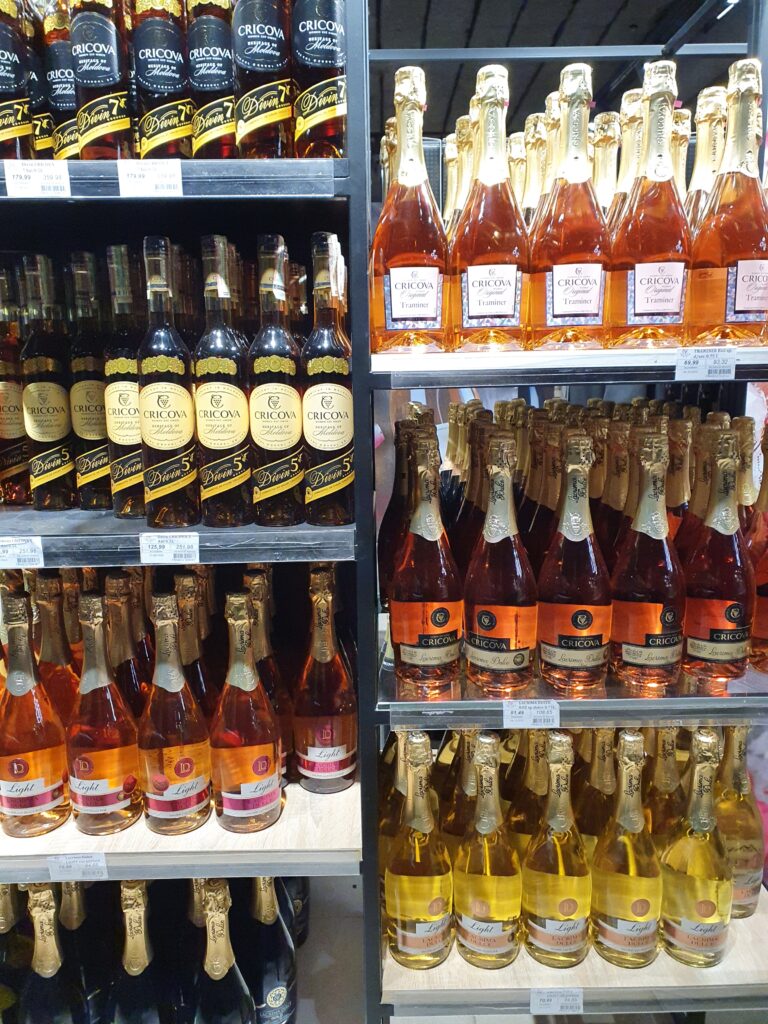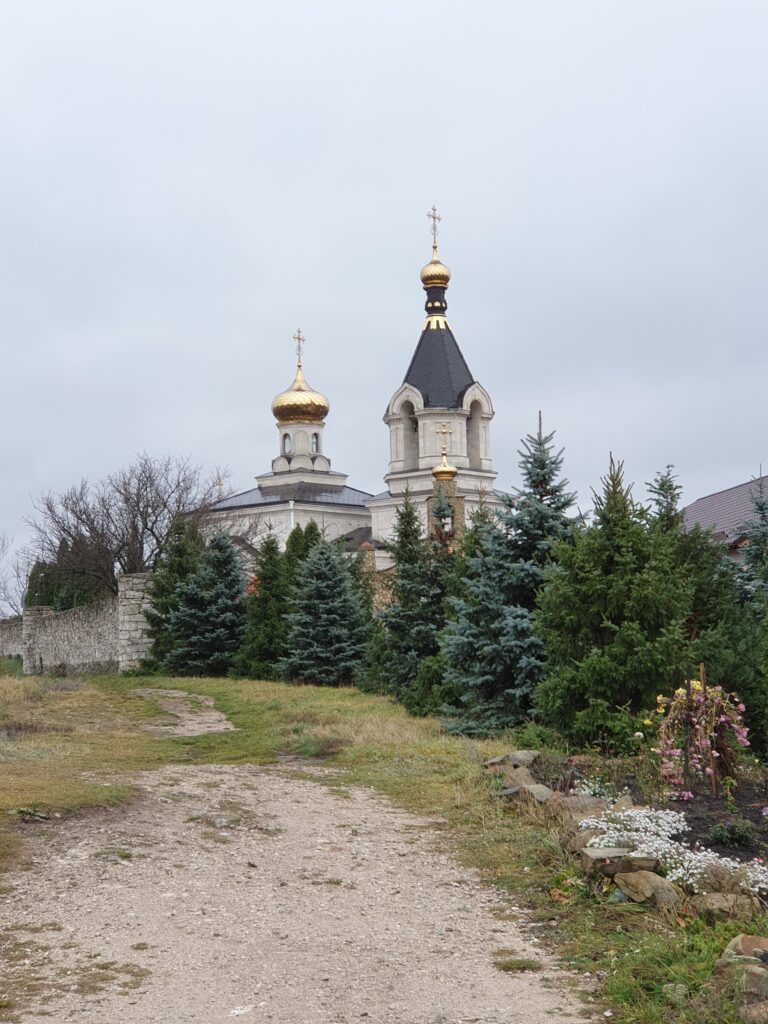Moldova
Despite being a small country, Moldova has a unique charm and offers visitors a glimpse into its rich history, culture, and natural beauty.
Moldova offers a range of attractions for tourists, including its scenic countryside, historical sites, wineries, and cultural events. Some popular tourist destinations include Orheiul Vechi (an ancient monastic complex), the Cricova and Milestii Mici wineries (famous for their underground wine cellars), and various cultural festivals and events throughout the year.
Quick facts
Capital: Chisinau
Population: 2.6 million
Official language: Moldovan, which is virtually identical to Romanian. Russian is also widely spoken and is used as a second language
Area: 33,846 km²
Religion: The majority of Moldova’s population adheres to Eastern Orthodox Christianity, with smaller minorities of other Christian denominations and other religions
Government: Moldova is a parliamentary republic with a multi-party system. The President is the head of state, while the Prime Minister is the head of government
Visa
Citizens of certain countries can enter Moldova without a visa for short stays ranging from a few days to several months. These countries typically include EU member states, the United States, Canada, Australia, and many others
Money
The official currency is Moldovan Leu is abbreviated as MDL
ATMs are widely available in Moldova
While credit and debit cards are accepted at some hotels, restaurants, and larger stores in Moldova, cash is still the preferred method of payment in many establishments, especially in smaller towns and rural areas
Is Moldova safe?
Moldova is generally considered a safe destination for travelers. However, like any country, it’s essential to exercise caution and take common-sense precautions to ensure your safety. Here are some factors to consider regarding safety in Moldova:
Crime: Moldova has a relatively low crime rate compared to many other European countries. Violent crime against tourists is rare, but petty crime such as pickpocketing and theft can occur, especially in crowded tourist areas or on public transportation. Be vigilant with your belongings and avoid displaying valuable items openly.
Scams: As in any tourist destination, be cautious of scams targeting tourists. These can include overcharging for goods or services, fraudulent currency exchange, or distraction techniques used by pickpockets. Stay alert and use reputable services whenever possible.
Public Transportation: Moldova’s public transportation system, including buses and trains, is generally safe to use. However, keep an eye on your belongings, especially in crowded spaces. It’s also advisable to use licensed taxis or reputable ride-hailing services rather than unmarked or unofficial taxis.
Political Situation: Moldova has experienced political instability in the past, but the situation has generally been peaceful in recent years. Stay informed about current events, especially if planning to participate in public gatherings or demonstrations.
Health and Safety: Ensure you have adequate travel insurance that covers medical emergencies while traveling in Moldova. Tap water in urban areas is generally safe to drink, but it’s recommended to stick to bottled water, especially in rural areas. Additionally, be cautious when consuming food from street vendors to avoid foodborne illnesses.
Natural Hazards: Moldova is not prone to natural disasters such as earthquakes or hurricanes. However, road conditions can be poor, especially in rural areas, so exercise caution when driving or using public transportation.
Overall, Moldova is considered a safe destination for travelers, and most visits are trouble-free. By taking basic precautions and staying aware of your surroundings, you can enjoy your time in Moldova with minimal concerns about safety. As always, it’s a good idea to check travel advisories from your government or reputable sources before your trip for any updates on safety and security issues.



Must-see places in Moldova
Moldova may be small, but it offers a variety of interesting and culturally rich attractions. Here are some must-see places in Moldova:
Chisinau: The capital city of Moldova, Chisinau, is the cultural, economic, and political center of the country. Visitors can explore its vibrant street life, historic landmarks, and cultural institutions such as the National Museum of History of Moldova and the National Museum of Fine Arts.
Orheiul Vechi: This historical and archaeological complex located near the village of Trebujeni is a UNESCO World Heritage Site. It features ancient cave monasteries, archaeological remains dating back thousands of years, and stunning views of the surrounding countryside.
Cricova Winery: Moldova is renowned for its wine production, and a visit to Cricova Winery is a must for wine enthusiasts. It’s one of the largest underground wine cellars in the world, with miles of underground tunnels filled with aging wine barrels and tasting rooms.
Milestii Mici Winery: Another famous winery in Moldova, Milestii Mici, is known for its extensive underground wine storage facilities, which include the Guinness World Record-winning “Golden Collection” of rare and valuable wines.
Capriana Monastery: Located in the Codru Forest near the village of Capriana, this monastery is one of the oldest in Moldova, dating back to the 15th century. It’s known for its beautiful architecture, serene surroundings, and historical significance.
Saharna Monastery: Nestled in a picturesque setting near the Saharna village, this monastery complex includes several churches, chapels, and natural waterfalls. It’s a popular pilgrimage site and offers opportunities for hiking and enjoying nature.
Soroca Fortress: This historic fortress, located in the city of Soroca, is an iconic symbol of Moldova’s medieval past. It’s known for its distinctive octagonal shape and well-preserved defensive walls, towers, and ramparts.
Transnistria: While not officially recognized as an independent country, a visit to Transnistria offers a unique cultural experience. Explore the capital city of Tiraspol, visit Soviet-era monuments and museums, and witness the distinct atmosphere of this breakaway region.
Purcari Winery: Situated in the southern part of Moldova, Purcari Winery is famous for its high-quality wines and picturesque vineyards. Visitors can enjoy wine tastings, tours of the winemaking facilities, and scenic views of the countryside.
Gagauzia: Explore the autonomous region of Gagauzia, known for its unique culture, traditions, and historical heritage. Visit the capital city of Comrat, learn about the Gagauz people, and experience their hospitality and customs.
These are just a few of the many attractions that Moldova has to offer. Whether you’re interested in history, culture, nature, or wine, Moldova has something for every traveler to enjoy.




Transnistria
Transnistria, officially the Pridnestrovian Moldavian Republic (PMR), is a breakaway state located mostly on a strip of land between the Dniester River and the eastern Moldovan border with Ukraine. Here are some key points about Transnistria:
Background: Transnistria declared independence from Moldova in 1990, following the dissolution of the Soviet Union. This declaration led to a brief armed conflict in 1992, resulting in a ceasefire but no final resolution to the status of Transnistria.
Status: Despite its self-declared independence, Transnistria is not recognized as an independent state by any member of the United Nations. Moldova considers Transnistria to be part of its territory, while Transnistria operates as a de facto independent state with its own government, military, and currency.
Government: Transnistria operates as a republic with its own government, led by a president and a parliament. It has its own constitution, legal system, and institutions.
Economy: The economy of Transnistria relies heavily on heavy industry, particularly steel production and manufacturing. However, the region faces economic challenges due to its unrecognized status, limited international trade, and dependence on subsidies from Russia.
Demographics: Transnistria has a diverse population, with a mix of ethnic Russians, Ukrainians, Moldovans, and other groups. Russian is the dominant language, and the region has close cultural and historical ties to Russia.
International Relations: Transnistria maintains close ties with Russia and receives political and economic support from Moscow. However, its status remains a subject of international dispute and ongoing negotiations between Moldova, Transnistria, and international mediators.
Travel: Travel to Transnistria can be complicated due to its unrecognized status. Visitors may encounter difficulties with border crossings, and it’s essential to check entry requirements and travel advisories before planning a trip to the region.
Overall, Transnistria remains a unique and complex entity within the broader context of Moldova’s political landscape, with its own distinct identity and challenges.




